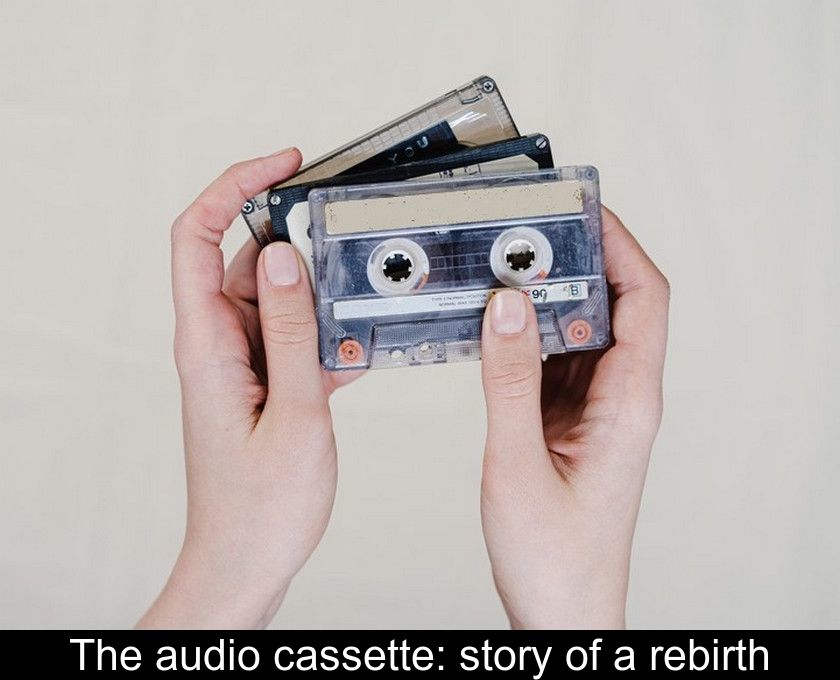The Audio Cassette: Story Of A Rebirth
The audio cassette was a real revolution in the early 1960s, before falling into oblivion with the advent of the recordable CD. The cassette tape, which facilitated the circulation of music production by allowing home audio recording from vinyl records or other cassettes, was a great success. Disappeared in the late 1980s, it is now making a comeback at record stores.
A revolutionary invention in the 1960s.
The audio cassette, also known as the "minicassette" in English, was invented in 1961 by the Philips brand. It was introduced to the general public, along with the first tape recorder (the E1-3-300), in 1963.
This revolutionary invention for its time is a plastic case containing two reels where a magnetic tape is wound. It allows for recording and listening to music or any other type of sound source.
For years, it was the only medium that allowed for domestic audio recording, from vinyl records or other cassettes.
An imperfect sound magnetic tape
In an audio cassette, four channels or tracks are written in parallel on the magnetic tape. On each side of the tape, two channels allow for stereo recording.
This medium does not offer perfect sound reproduction, especially due to the speed at which the magnetic tape moves (which is only an average of 4.75 cm per second). This loss is particularly noticeable in the high frequencies. However, this flaw did not prevent the cassette tape from enjoying immense success for nearly three decades!
In the 1980s, the "auto-reverse" system made its appearance. This system, integrated into players, allowed users to avoid flipping the cassette to listen to the other side. This system usually worked by using a dual playback head and reversing the direction of the tape, although some cassette players actually flipped the cassette.
A huge success
The audio cassette, compact and sturdy, was the only medium to rival the vinyl record for about thirty years. This very popular medium facilitated the circulation of musical works by allowing home recordings and compilations.
The decision of its inventor, who graciously granted the patent to all interested industrialists, also greatly contributed to its success. In 1967, Philips launched the mini cassette for dictation devices, soon followed by Olympus and its famous microcassette for Dictaphone in 1969. In 1985, Dictaphone developed an even smaller format with JVC: the picocassette (weighing 3 grams and capable of holding 60 minutes of speech).
The popularity of the audio cassette is also inseparable from the worldwide success of the Walkman! The story goes that this portable cassette player was imagined by the boss of Sony because he wanted to be able to listen to music while playing golf...
The first Walkman was released in 1979. At the height of its glory in 1989, the cassette sold 83 million copies per year in the United Kingdom alone!
Did you know?
The audio cassette was also used for a while to store computer data (recorded analogically on the tape). However, this unreliable medium was quickly replaced by the floppy disk in the 1980s.
The decline of the cassette tape and its revival.
Until 1983, music was marketed in the form of vinyl records or cassettes.
The introduction of the audio CD disrupted the music market: with the release of the first CDs, which offered the same sound reproduction as the original copied source, the audio cassette began to decline. Portable CD players in the 1990s and digital music players in the 2000s took away the mobile listening market from cassette tapes.
Since the late 1980s, it was believed that this format was definitively has been. But that is not the case because cassettes are making a notable comeback in record stores! These stores are selling them again in various music genres (hip-hop, rock, and even pop).
Some music enthusiasts are embracing these old formats, so much so that 100,000 audio cassettes were sold in the United States in 2020, along with 10 million vinyl records! Riding on this wave of nostalgia, more and more English-speaking artists like Eminem, The Weeknd, Lady Gaga, and The Rolling Stones are re-releasing their albums in cassette format. Rewind and start again!











